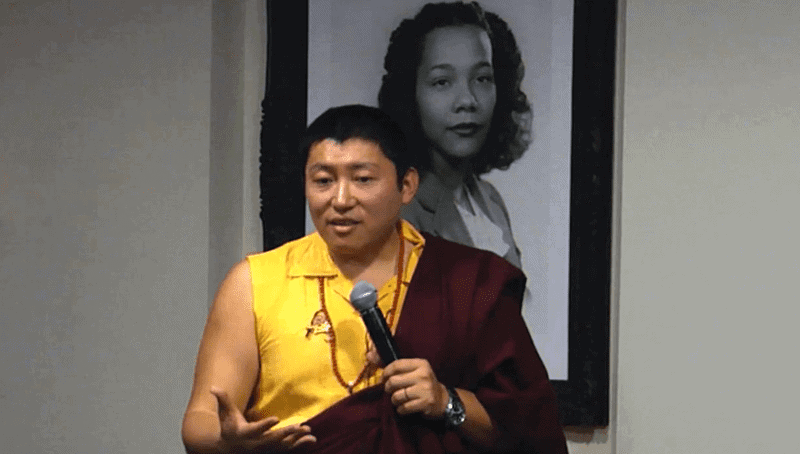Transforming anger is a skill that we can all develop. In this very brief video excerpt, Phakchok Rinpoche gives some specific advice on transforming anger, We may sometimes feel that we have the right or that we have well-meaning motivation to be angry. But Rinpoche reminds us that anger does not solve our problems.
Generally speaking, anger doesn’t make us perform more effectively, does it? Stop, and really consider that carefully. When we speak or act from an angry place what happens? Often, anger means that our message falls on deaf ears.
Transforming Anger into Strength
Rinpoche observes that there is a big difference between anger and strength. Transforming anger into strength, or the ability to do or say what needs to be done, is important. We can be strong. Traditionally, we give the example of a parent yelling at a child who is about to do something very dangerous. The parent may appear angry because he or she needs to be forceful to avoid a potential threat. But, that is not real anger. Anger comes from dislike and fear.
Similarly, we may wish to make changes in society for a good reason. And we do what we can forcefully. But that is not anger: that is strength. Through our own experience, we can understand that anger does not help a situation.
Instead, we work on transforming our anger into compassion. That allows us to act in a way that can bring change successfully. We pay attention to our words and actions. By doing that, we soften our delivery and we actually change. As we understand this, we become different and the changes in ourselves affect the people around us. They, too, will have less anger. Experience and knowledge can help us and others transform.
Exercise: Transforming Anger
Think back to a specific situation in the past day or week where you became angry. Try to visualize the scene, feel the sensations in your body, and the movement of your mind. Don’t rehash the conversation or the action that precipitated the anger, but let a felt sense of the experience arise and simply observe that. How does it feel in your body? Do you detect tightness or hotness anywhere? What changes can you observe in your breathing? Does that anger feel good?
Sometimes we may feel a sort of rush of adrenaline that does feel powerful and exciting–but look carefully and see how quickly that subsides. Do you feel vaguely queasy, or uneasy now, looking back at your own reaction Don’t try to manipulate anything, simply see the experience as if you are watching a movie.
Now, simply put your hand on your chest, or on your belly and take a few deep breaths, allowing yourself a few seconds of rest. After that, look at the situation again with fresh curiosity. What is going on?
Give rise to compassion for the “angry” you and wish yourself equanimity and peace of mind. And can you also now have the space to extend that compassion to the person to whom you reacted with anger. Can you, from a space of awareness, see that they, too may be feeling stressed or unhappy? Consider how you might have handled the situation without anger. What might have been a more skillful approach?
When we develop the habit of examining our own anger (we are human, so we will continue to give rise to anger) we can become more expert at diffusing it ourselves. If we’ve “rehearsed” situations that have triggered anger in the past and have also thought of ways to transform the anger, then the process will become quicker and more automatic. We may still feel anger, but it will start to simply arise and then release. And when that happens we can truly transform!










Responses